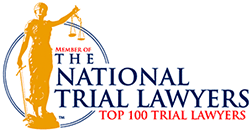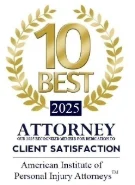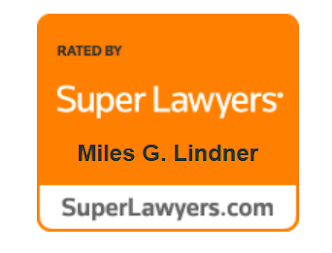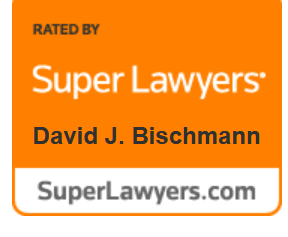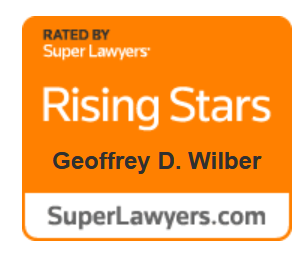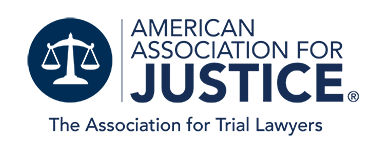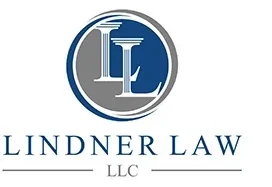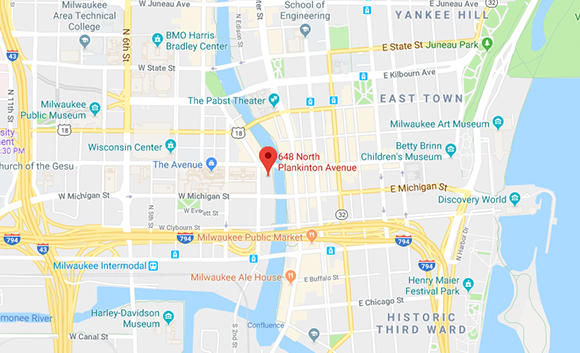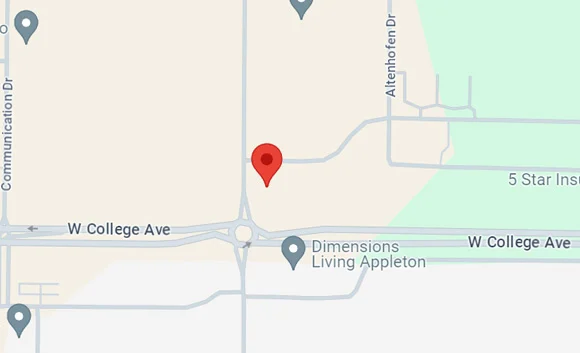Practice Areas:
Green Bay Premises Liability Lawyer
Last updated on July 14, 2025
A loose handrail at an apartment complex, black ice in a grocery parking lot, or poor lighting in a downtown stairwell can turn a routine errand into an emergency room visit. Under Wisconsin law, property owners must maintain reasonably safe premises. When they fail, injuries like fractures, traumatic brain trauma, and months of missed work follow. At Lindner Law, LLC, we take fast, strategic action to hold negligent owners accountable and secure the compensation you need to heal.
Green Bay’s busy retail corridors, industrial waterfront, and growing housing market create countless places where slip and fall incidents and accidents can happen in types of personal injury cases, specifically in types of premises liability cases on slippery surfaces, highlighting the need for safe premises. Local hospital data shows hundreds of slip and fall injuries each year, making it crucial to understand the time frames for taking legal action. With over thirty years of experience in Wisconsin courts, our law firm knows how to uncover code violations, collect maintenance records, and build a case that commands maximum compensation and full value.
Why Clients Trust Lindner Law With Property Hazard Claims
Wisconsin Only Practice
Our attorneys handle personal injury cases exclusively in Wisconsin. We track building code changes, appellate decisions, and local ordinance updates so your case strategy reflects the newest legal standards.
Results That Motivate Insurers to Pay
Insurers respect a firm that brings verdicts home. Our record of millions recovered for injury victims means insurance companies and carriers often settle for a fair settlement and reasonable settlement terms that reflect the true cost of your injuries rather than risk trial or engage in settlement negotiations.
No Fee Unless We Succeed
You never write us a check out of pocket. We advance investigation expenses, expert fees, and court costs, then earn a percentage only after money is recovered for you.
Local Knowledge From Decades in Brown County
We know which intersections flood during spring thaw, which grocery stores have chronic floor polish issues, and which apartment managers ignore tenant maintenance requests. This insight moves negotiations faster.
Communication That Puts You First
Clients receive direct phone numbers for their attorney and paralegal, same day return calls, and flexible evening meetings. If mobility is limited, we visit your home or hospital room.
Common Premises Hazards
Wet or polished floors in grocery aisles
Late-night cleaning crews often mop without posting warning cones or overapply wax that leaves a glassy surface invisible to shoppers. A simple errand for milk can end with a violent fall, torn ligaments, and weeks in a brace. Store policy manuals routinely require “caution-wet-floor” signs in multiple languages; when managers skip that step they create clear negligence.
Snow and ice accumulation in parking lots
Wisconsin weather changes quickly and black ice can form before dawn. Commercial landlords must contract snow removal and apply salt within a reasonable time after precipitation stops. Surveillance timestamps and weather service records let us show that hours passed without any plowing or salting, turning a routine school drop-off into an ambulance ride.
Broken or uneven sidewalks
Tree roots, freeze-thaw cycles, and delivery trucks raise concrete slabs or leave potholes large enough to twist an ankle. City ordinances give owners notice to repair trip hazards measuring as little as one-quarter inch in height. Ignoring that notice allows us to argue the property owner chose cost-saving over visitor safety.
Loose handrails and broken stairs
Apartment stairwells and older commercial buildings develop rot, rust, or missing anchor bolts. A tenant who grips a railing for balance can plunge backward when the rail gives way. Building codes require secure rails at specified heights and load capacities; maintenance logs often reveal months of ignored tenant complaints.
Inadequate lighting in hallways and parking ramps
Burned-out bulbs and poorly aimed fixtures create shadows that hide curbs, wheel stops, and columns. Victims misjudge distances, miss a step, or collide with unseen obstacles. Light-meter readings taken by our investigators prove illumination levels below code requirements, shifting liability squarely to the landlord.
Falling merchandise in big-box stores
Pallets stacked above eye level must be shrink-wrapped or secured with safety bars. When employees cut the wrap or drive a forklift too fast, heavy boxes can tumble onto customers. OSHA guidelines and retailer safety handbooks provide standards the store failed to follow.
Typical Injuries We See
Traumatic brain injuries
A backward fall onto a hard surface can cause a concussion or bleeding inside the skull. Symptoms include headaches, memory problems, and dizziness that last months.
Spinal cord and disk injuries
Sudden twisting during a trip can herniate disks or pinch nerves, leading to chronic pain, weakness, or numbness in arms or legs.
Fractures of the hip, wrist, or ankle
Landing on an outstretched hand or side often breaks bones that require plates, screws, or external fixation. Older adults face longer hospital stays and loss of independence.
Torn ligaments and meniscus damage in knees
A misstep on uneven pavement can twist the knee beyond its normal range, tearing soft tissue that may need arthroscopic surgery.
Severe lacerations and facial injuries
Glass shelving, exposed metal edges, or a jagged floor drain grate can leave deep cuts and permanent facial scars.
Psychological trauma and fear of walking in public
After a serious fall some clients develop anxiety about leaving home, which reduces social engagement and overall quality of life.
Critical Evidence We Gather
Incident reports and witness interviews
We demand the store’s internal accident form and immediately record detailed statements from employees and bystanders. Early interviews capture exact hazard descriptions, floor conditions, weather, and management reactions before memories fade or narratives shift.
Surveillance video and maintenance logs
Most retailers keep at least thirty days of digital footage. Preservation letters stop automatic overwriting and let us retrieve the precise moment of the fall. Cleaning schedules, snow-removal invoices, and elevator inspection stickers show whether hazards were ignored or routine maintenance skipped.
Building and safety code records
City inspectors cite owners for cracked stairs, improper handrails, and lighting violations. We pull inspection histories, repeat-offender notices, and photographs from prior citations to prove a pattern of neglect that boosts settlement leverage.
Photographs of the hazard and surrounding area
High-resolution images document puddle size, ice thickness, stair height variance, or missing warning signs. We include a measuring tape and color chart in each photo, giving jurors scale and clarity without having to imagine dimensions.
Medical records and expert evaluations
Emergency charts, MRI scans, and surgeon notes link every fracture or soft-tissue tear to the fall. Biomechanical engineers then explain how slipping, tripping, or sudden railing failure produced the forces that caused specific injuries.
Economic documentation
Pay stubs, W-2 forms, and employer letters confirm wages lost during recovery. Vocational experts calculate long-term earning deficits if permanent limitations prevent a return to heavy-duty work, climbing ladders, or prolonged standing.
Damages You Can Recover
Medical expenses
Ambulance transport, emergency evaluation, orthopedic surgery, hospital stays, physical therapy, prescription medication, assistive devices such as walkers or shower chairs, home-access upgrades like grab bars, follow-up imaging, and projected future treatments recommended by your doctors.
Lost wages and reduced earning capacity
Missed paychecks while you heal, overtime opportunities that disappear, freelance contracts you cannot fulfill, and economist projections of future earnings if permanent restrictions shorten your career or block promotions.
Physical pain and suffering
Daily muscle spasms, nerve pain that radiates down the arms or legs, joint stiffness that worsens in cold weather, and persistent soreness that makes everyday tasks like carrying laundry and mowing the yard slow and painful.
Emotional distress and loss of enjoyment of life
Fear of walking on unfamiliar surfaces, anxiety inside busy stores, depression from prolonged immobility, and giving up favorite hobbies such as bowling, gardening, or coaching youth sports.
Permanent disfigurement or disability
Facial scars from shattered glass, a limp that changes one’s gait, dependence on a cane, or the inability to kneel, climb ladders, or lift grandchildren without experiencing pain are all conditions supported by testimony from surgeons and physical therapists.
Punitive damages
Additional money awarded when a property owner shows reckless disregard, such as disabling fire alarms, ignoring repeated city citations, or instructing staff to skip mandatory snow removal to cut costs.
Steps to Take After a Premises Injury
- Seek medical care right away
Prompt treatment protects your health and creates an early record tying injuries to the incident. - Report the hazard to property management
Ask for a copy of any incident form and note the name and title of the employee who takes your statement. - Take photos or video
Capture the hazard, lighting, weather conditions, and any missing warning signs before cleanup crews change the scene. - Collect witness contacts
Shoppers, delivery drivers, or tenants who saw the fall are valuable neutral voices. Record their phone numbers while still on site. - Save footwear and clothing
Shoes retain residue that can show slippery substances. Keep items in sealed bags to avoid contamination. - Avoid detailed talks with insurance adjusters
Provide only basic facts until you consult legal counsel. - Contact Lindner Law, LLC
Our team preserves surveillance footage, secures maintenance records, and directs all insurer communication so you can focus on recovery.
The Lindner Law Five Phase Process
- Free consultation
We review how the incident happened and outline a timeline for your claim. - Intensive investigation
Preservation letters go out within twenty four hours. Investigators photograph the scene, measure lighting, and collect witness statements. - Medical collaboration
We work with your physicians to forecast future surgeries, therapy needs, and permanent limitations, ensuring no cost is missed. - Strategic negotiation
A comprehensive demand package backed by expert reports and local jury verdict data pushes insurers to settle at full value. - Trial readiness
If the carrier stalls, we file suit and push for an early trial date. Demonstrating readiness often results in settlement before the first hearing.
Frequently Asked Questions
Do I have a case if I did not see a caution sign?
Yes. Wisconsin law requires property owners and store managers to post clear, conspicuous warnings when floors are wet, freshly waxed, or otherwise hazardous. A bright yellow cone placed in open view or a large bilingual floor-stand sign at eye level satisfies that duty. A small cone shoved behind a pallet, a handwritten sheet of paper taped below knee height, or a warning placed after the fall does not. If a reasonable visitor could not see or read a warning before encountering the danger, the owner is still liable. We document sign placement with photographs, interview employees about cleaning protocols, and often discover that no warning existed at all.
What if I slipped during a snowstorm?
Property owners are allowed a short, “reasonable” window after active snowfall ends to clear sidewalks and parking lots, but they cannot simply wait for warmer weather. To prove negligence, we compare precise weather-service timestamps with surveillance video, snow-removal logs, and contractor invoices. If four inches of snow fell overnight and the lot was untouched by noon, or if ice re-froze because salt was never reapplied, the owner has breached that duty. Our experts use meteorological data and industry-standard snow-removal guidelines to show the cleanup was unreasonably delayed or incomplete.
Can I sue if I was partially at fault?
Yes. Wisconsin uses a modified comparative negligence rule. If you’re 50% or less at fault, you can still recover compensation. We work to reduce any blame placed on you by showing the property owner failed to meet safety standards. If a jury finds you fifty percent or less responsible, for example, you were texting while walking but the store left a spill unattended, you can still recover damages, though your award is reduced by your percentage of fault. We work to minimize any assigned fault by emphasizing code violations, lack of warnings, or long-standing hazardus the owner ignored.
Will I have to testify in court?
The majority of premises cases resolve through settlement or mediation, so formal testimony is often unnecessary. If litigation proceeds, you may give a deposition under oath and, in rare instances, appear at trial. We prepare you thoroughly with mock questions, explain courtroom procedure, and accompany you throughout the process. Clients frequently remark that this preparation turns an intimidating experience into a confident presentation of the facts.
How long do I have to file?
For most premises liability claims, you have three years from the injury date to file a lawsuit (Wis. Stat. § 893.54). If the property is owned by a government agency, serve a written notice of injury within four months and you may have two years to sue. Missing these deadlines almost always ends the claim, so early consultation is critical.
What does it cost to hire Lindner Law?
No upfront costs. We cover all expenses and work on a contingency basis. Our fee is a percentage of the amount we recover for you, and if we do not obtain compensation, you owe no attorney fee and we absorb the expenses. This arrangement lets you pursue justice without financial risk.
Take the First Step Toward Recovery
A property hazard can change your life in seconds, but you do not have to face the financial fallout from a premises liability accident alone. Lindner Law, LLC’s legal team is ready to investigate, negotiate, and if necessary litigate against the responsible party or other negligent parties so you receive fair compensation and every dollar you deserve.
Call (920)-882-4860 or complete our online case evaluation form for a free consultation. You pay nothing on a contingency fee basis unless we win, and one conversation can provide the clarity and confidence you need to move forward.



